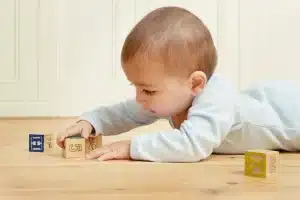How Building Blocks Help Develop Fine Motor Skills
Building blocks are not just toys; they are powerful tools that promote the development of fine motor skills in children. By engaging with building blocks, children improve their hand-eye coordination, dexterity, and spatial awareness. In this article, we will explore the various ways in which building blocks aid in the development of fine motor skills.
Features of Building Blocks:
- Various Sizes and Shapes: Building blocks of different sizes, shapes, and textures allow children to experiment and explore, encouraging the development of their fine motor skills.
- Bright Colors: Vibrant colors in building blocks captivate children’s attention, stimulating their visual perception and enhancing their fine motor skill development.
- Durable Construction: High-quality building blocks ensure longevity, allowing children to practice their fine motor skills over an extended period.
- Safe and Non-Toxic: Building blocks made from child-friendly materials ensure the safety of children during playtime.
Benefits of Building Blocks for Fine Motor Skill Development:
1. Hand-eye Coordination:
Building blocks require children to manipulate objects with their hands while simultaneously coordinating their movements with their vision. This process strengthens the connection between their eyes and hands, improving hand-eye coordination.
2. Dexterity Enhancement:
As children grasp, stack, and manipulate building blocks, their finger muscles are constantly engaged. This repetitive motion helps to strengthen the muscles, honing their dexterity and control over delicate movements.
3. Precision and Control:
Building blocks challenge children to place each block accurately and securely to create stable structures. This requires focus, precision, and control over their fine motor skills, enhancing their ability to perform delicate tasks.
4. Spatial Awareness:
Arranging blocks in a specific order and creating structures help children understand spatial relationships. They learn concepts like balance, symmetry, and stability, improving their spatial awareness and fine motor coordination.
5. Problem-solving Skills:
While playing with building blocks, children encounter challenges such as fitting blocks together, finding appropriate solutions, and balancing structures. These tasks enhance their problem-solving skills and critical thinking abilities.
6. Creativity and Imagination:
Building blocks provide children with an open-ended play experience, allowing them to create unique structures and designs. Through this creative process, children enhance their fine motor skills while nurturing their imagination and self-expression.
Conclusion:
Building blocks offer a multitude of benefits beyond simple play. By engaging with these toys, children develop crucial fine motor skills that form the foundation for various tasks and activities throughout their lives. The features of building blocks, such as their different sizes, bright colors, durability, and safety, further enhance the learning experience. So, next time you see a child playing with building blocks, remember that they are not just having fun; they are actively developing their fine motor skills.





